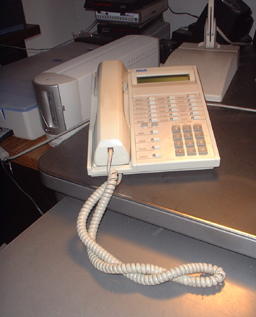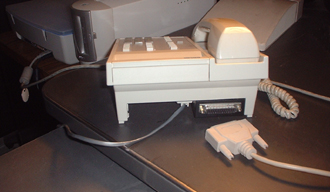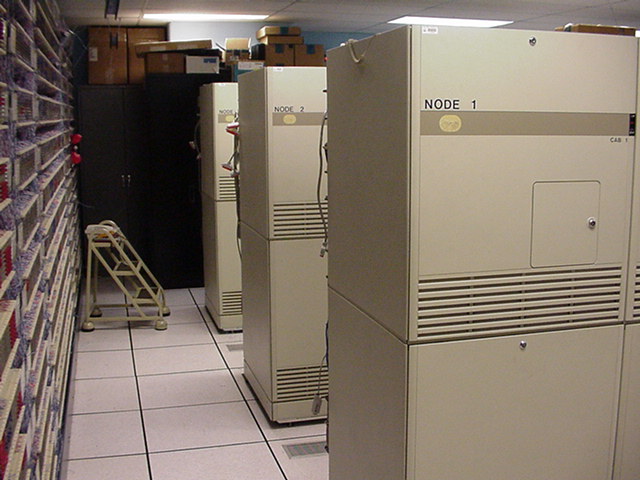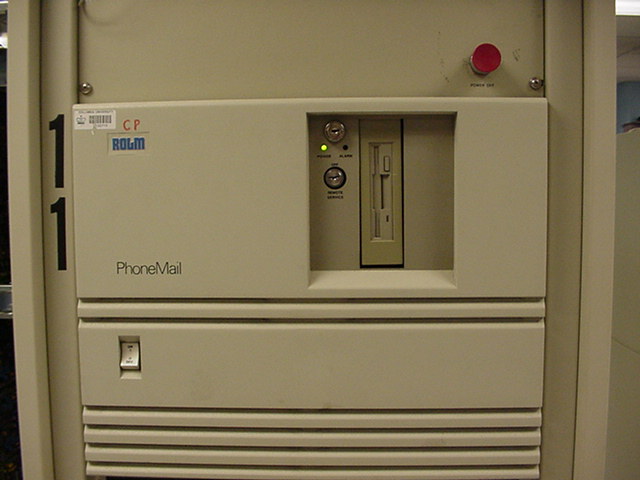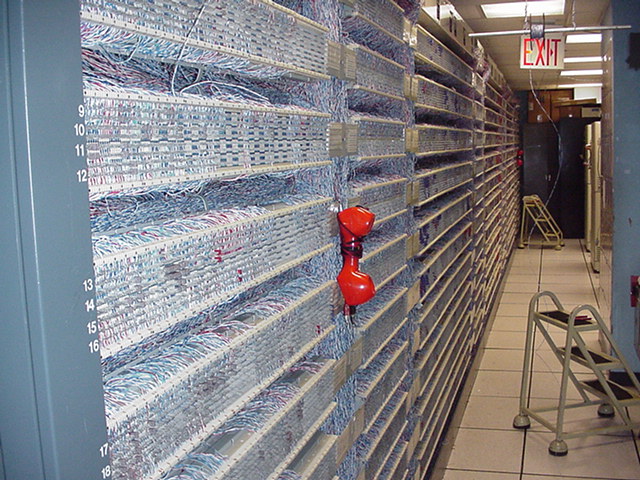The IBM/Rolm/Siemens CBX-9751 Model 70
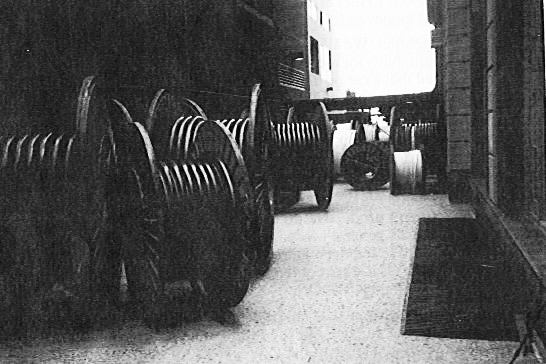
Columbia's Rolm telephone system was installed in 1988, replacing its previous AT&T Centrex service. By 1988 Rolm had been bought by IBM. IBM later partnered with Siemens AG, which later bought the Rolm subsidiary from IBM.
From the computing viewpoint, the advantages of an in-house telephone system were (1) Columbia's own wiring plant, connecting all the Morningside Heights buildings, both on and off campus; and (2) digital telephones providing 19200 bps data service to the central computers. When the project was complete in November 1988, 75 buildings had been connected by 6000 miles of cable; 100,000 pairs of riser and station cables were installed, connected to 13,000 voice/data jacks, 3500 of them in dormitories. There were dozens, perhaps hundreds, of excavations and street crossings, including Broadway and Amsterdam Avenue. The Rolm wiring plant provided the basis for universal campus networking, initially 10BaseT 10Mbps twisted-pair Ethernet over Cat 3 (Category 3) unshielded twisted pair copper wiring. Over the years the wiring is being upgraded to Cat 5 or higher, building by building.
Rolm data phones look like regular phones, but with female RS-232 DB-25 connectors in back. Shown here is a model RP624 with data module. The other end of the serial-port cable can be connected to a terminal or desktop computer such as a PC or Macintosh, for which Columbia's Kermit software was provided to allow interactive terminal connections and file transfer with our DEC, Unix, and IBM mainframes.
Rolmphones are digital, not analog like traditional phones. Time division multiplexing allows for separate voice and data connections on the same physical circuit. When the PBX was first installed, it replaced our previous data switch, a Gandalf PACX, as well as our AT&T Centrex voice system. Great racks of Data Communication Modules (DCMs) were set face-to-face against great racks of Ethernet terminal servers, connected by octopus cables. The terminal servers, of course, accessed our central computers by TCP/IP (Telnet), so it was no longer necessary for each central computer to have large numbers of serial ports. Each data circuit was fixed at 19200 bps, which seemed pretty fast in 1988 but not for long. Furthermore, the digital protocol used between the phone and the CBX, called RolmLink, did not provide any form of flow control. Rolm data connections were big business until the mid-1990s, by which time Ethernet was ubiquitous (thanks to the Rolm wiring plant!), at which point the Rolm data feature fell into disuse.
The CBX itself is installed on the first floor of Low Library, in the center of campus. It consists of 10 CBX and 10 PhoneMail "nodes", plus disks, tapes, terminals, etc, and the Main Distribution Frame (MDF), where all 50,000 wire pairs from the Morningside Rolm telephone jacks terminate. It is administered by the Office of Communications Services (OCS), which is part of Administrative Information Services (AIS), which formerly, together with what is now Academic Information Systems (AcIS), formed the Columbia Computer Center. [NOTE: By 2010 all these organizations and acronyms are ancient history, in the neverending rounds of reorganization and rebranding, but the equipment itself is still where it was and still operational.]
Here are some February, 2001, photos supplied by Ben García of Columbia's Office of Communications Services of the Rolm machine room in Low Library; click each image to enlarge it:
- Sachnoff, Neil, Secrets of Installing a Telephone System, Telecomm Library Inc, New York (1989) [41].
